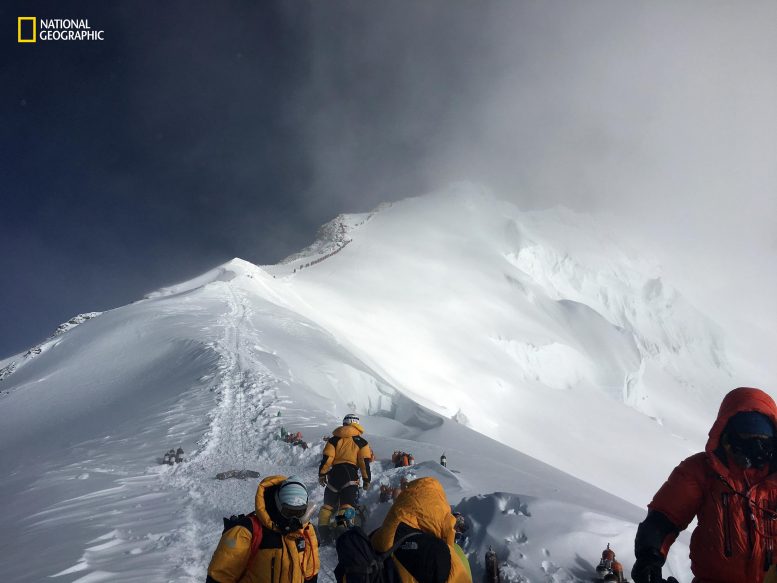
High-elevation climbers and Sherpa at the Balcony during the National Geographic and Rolex Perpetual Planet Everest Expedition. Credit: Baker Perry, National Geographic
Scientists have identified the highest recorded microplastics ever found on Earth — at an altitude of more than 8,000 meters (26,000 feet), close to the summit of Mount Everest.
Samples collected on the mountain and in the valley below it revealed substantial quantities of polyester, acrylic, nylon, and polypropylene fibers.
The materials are increasingly being used to make the high performance outdoor clothing commonly used by climbers, as well as the tents and climbing ropes used in attempts to climb the mountain.
As a result, researchers have suggested the fibers — the highest of which were found in samples from the Balcony of Mount Everest, 8,440 meters above sea level — could have fragmented from larger items during expeditions to reach the summit.
However, they have also surmised the plastics could have been transported from lower altitudes by the extreme winds which regularly impact the mountain’s higher slopes.
The research, published in One Earth, was led by researchers from the University of Plymouth’s International Marine Litter Research Unit, working with colleagues from the UK, USA, and Nepal. It was supported by the National Geographic Society and Rolex.
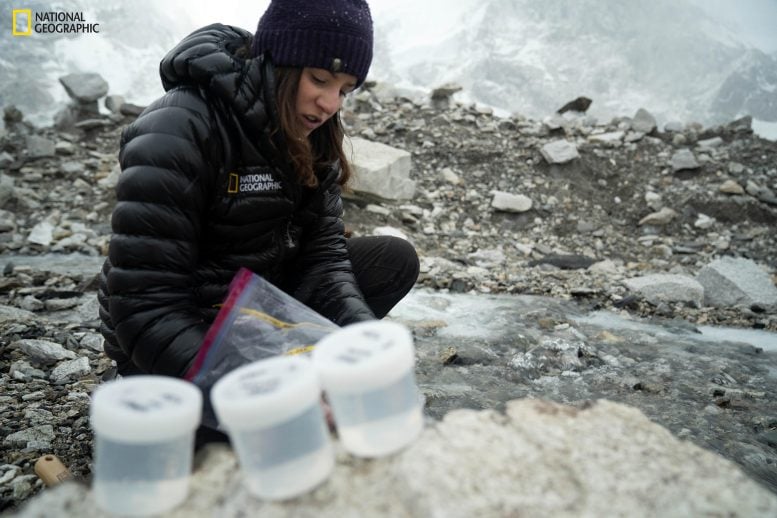
Samples are collected near Everest Base Camp during the National Geographic and Rolex Perpetual Planet Everest Expedition. Credit: Brittany Mumma, National Geographic
Research Fellow and National Geographic Explorer Dr. Imogen Napper, the study’s lead author, said: “Microplastics are generated by a range of sources and many aspects of our daily lives can lead to microplastics entering the environment. Over the past few years, we have found microplastics in samples collected all over the planet — from the Arctic to our rivers and the deep seas. With that in mind, finding microplastics near the summit of Mount Everest is a timely reminder that we need to do more to protect our environment.”
The samples were collected in April and May 2019, as part of National Geographic and Rolex’s Perpetual Planet Everest Expedition, and then analyzed in specialist facilities in Plymouth.
Of 19 high-elevation samples collected from the Mount Everest region for microplastic analysis, 11 were snow and eight were stream water. This included streams along the trekking routes close to the Khumbu Glacier, in the snow at Everest Base Camp, and high into the Death Zone near the mountain’s summit.
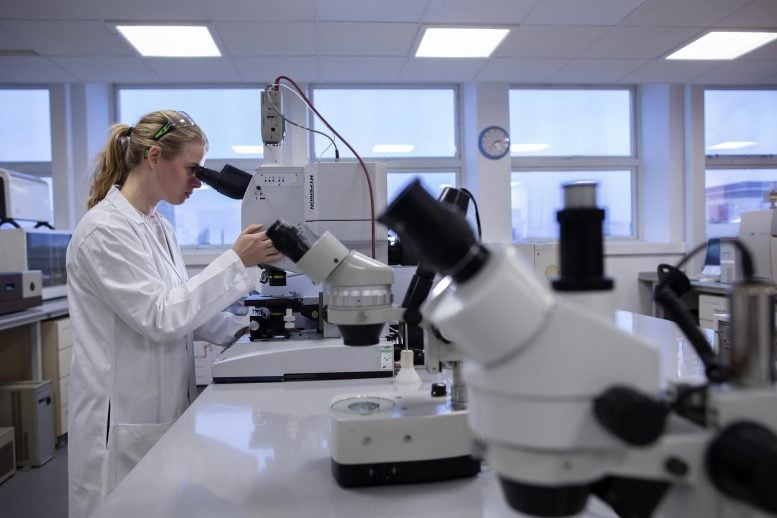
Dr. Imogen Napper working in the laboratories at the University of Plymouth. Credit: University of Plymouth
The highest quantities (79 microplastic fibers per liter of snow) were found at Base Camp, where summit expeditions are based for periods of up to 40 days. However, evidence was also found at Camps 1 and 2 on the climbing route, with 12 microplastic fibers per liter of snow recorded from the Balcony.
There were lower quantities in streams leading down from the mountain to the Sagarmatha National Park, with scientists saying this could be due to the continuous flow of water created by the region’s glaciers.
The first confirmed summiting of Mount Everest in 1953 coincided with the global rise to prominence of plastics and their use in society.
From a time in the 1950s when it had very few visitors, the Sagarmatha National Park (which includes the mountain) welcomed more than 45,000 visitors in 2016, while in 2019, climbing permits for Everest were issued in Nepal.
Over the same period, the versatility of plastic materials has resulted in a substantial increase in their use from five million tonnes globally in the 1950s to over 330 million tonnes in 2020.
Professor Richard Thompson OBE FRS, Head of the International Marine Litter Research Unit, said: “Since the 1950s, plastics have been increasingly used in all kinds of products because of their practicality and durability. However, it is those qualities that are, in large part, creating the global environmental crisis we are seeing today. There is now global recognition of the need to take action, with Nepal itself imposing regulations on climbing expeditions to try and curb the environmental problems created by waste. This study and our continued research only emphasize the importance of designing materials that have the benefits of plastics without the lasting and harmful legacy.”
Reference: “Reaching New Heights in Plastic Pollution—Preliminary Findings of Microplastics on Mount Everest” by Imogen E. Napper, Bede F.R. Davies, Heather Clifford, Sandra Elvin, Heather J. Koldewey, Paul A. Mayewski, Kimberley R. Miner, Mariusz Potocki, Aurora C. Elmore, Ananta P. Gajurel and Richard C. Thompson, 20 November 2020, One Earth.
DOI: 10.1016/j.oneear.2020.10.020



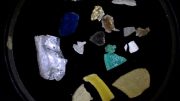




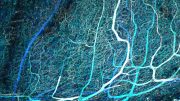
Be the first to comment on "Mount Everest: Microplastics in the Death Zone"